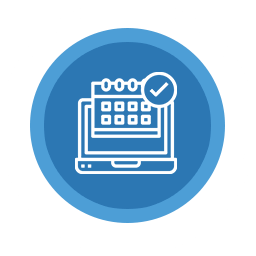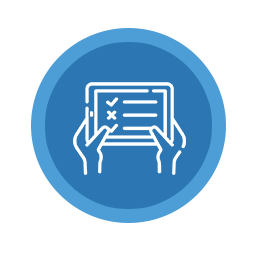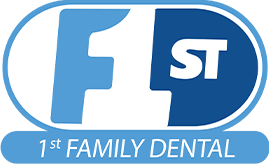The best way to keep your smile bright and healthy for life is by maintaining an effective oral hygiene routine right at home. If you have kids at home, use our helpful oral health care guide for children and make it a family affair! Here are some helpful tips to keep your teeth clean and avoid dental emergencies and issues such as cavities in between your regular checkup visits.
Choosing & Caring For Your Toothbrush
Selecting a toothbrush that is right for you can be a very personal choice, and with all of the brushes available on the market, it can be quite confusing, too!
- Use soft bristles: 1st Family Dental recommends that you select a toothbrush with soft bristles. Brushes with harder bristles are not more effective at cleaning your teeth; rather, harder bristles can irritate your gums and even damage the surfaces of your teeth from their abrasiveness.
- Find a comfortable fit: Make sure the head of your toothbrush fits comfortably in your mouth, and can reach all of the surfaces of your teeth, even in the back. Some adults even use child-sized brushes or models with smaller heads. This is perfectly OK, as long as the brush feels comfortable for you.
- Electric versus Manual: When it comes to choosing an electric toothbrush versus a manual one, there are pros and cons for each. Electric toothbrushes can be more effective than manual brushes at removing plaque, food particles, and cleaning more surface area. However, they are more expensive than manual toothbrushes, and some people do not like the way the toothbrush feels when it is turned on. The most effective toothbrush is the one that you like and will use every day.
- Replace Every 3 Months: No matter which toothbrush you choose, your brush is only as effective as its bristles. it is essential to replace the brush or the head every 3 months.
Choosing Toothpaste
Toothpaste is another decision that will depend on a variety of factors. The ADA currently recommends the use of toothpaste with fluoride when brushing for ages 3 through adulthood. However, at 1st Family Dental, we keep abreast of ongoing research and are aware that some individuals and groups have raised concerns about the widespread use of fluoride, including water fluoridation. While we will continue to support fluoride use both in our offices and in our homes, we are respectful of any individual’s decision not to use fluoride toothpaste.
When it comes to children, you should closely supervise the toothbrushing process no matter what type of toothpaste you choose, to ensure your child is brushing their teeth properly and to help them avoid swallowing or eating the toothpaste.
There are are growing number of toothpastes and powders available on the market that either contain fluoride or are fluoride-free. For more information about alternative types of toothpastes and tooth powders, we suggest visiting the Environmental Working Group’s information site about toothpaste. What we find most important at 1st Family Dental is the maintenance of a healthy oral hygiene routine that includes brushing twice a day, with some kind of toothpaste.
Proper Flossing Technique
Flossing should be done at least once per day, ideally each time you brush. If you choose to floss once per day, however, we recommend flossing at night before bed, and before brushing your teeth. Flossing is essential in preventing gum disease and is necessary to remove food particles and plaque from between teeth. Not flossing will result in the buildup of tartar and calculus between teeth and even under the gum line. Gum disease results when bacteria collect on the tartar and calculus, causing inflammation and an immune response. Flossing helps ensure that all parts of your teeth get clean; up to 35% of a tooth’s surface cannot be reached with a toothbrush. Flossing is also necessary in order to keep your breath as fresh or neutral as possible.
- Start with about 18 inches of dental floss and wind each end around a finger on opposite hands several times. The type of floss you use is up to your personal preference. However, if you have dental restorations such as bridges and crowns or orthodontic treatment like braces, you may wish to try something like Oral B’s Superfloss® which is resistant to shredding or tearing and can help make flossing easier and more efficient.
- Holding the floss firmly and stretched taut between your thumbs and fingers, slide the floss gently but firmly up and down between each tooth. You may need to move the floss back and forth to reach to the gum line. Do not force or snap the floss, however, as this can damage gum tissue. Remove the floss using the same technique in reverse.
- Repeat this process for each tooth, using a clean section of floss each time.
- If it has been some time since you last flossed, it is normally to experience a bit of bleeding and tenderness along the gumline. This should diminish and then disappear over the course of a few days of regular flossing. However, if it does not, or you experience pain, swelling, or discomfort while flossing, contact your dentist right away for an assessment.
Proper Tooth Brushing Technique
Whether you are using a manual or electrical toothbrush, there are a few common steps to follow to help ensure you and your family are brushing your teeth efficiently and effectively. For additional information for children, please see our children’s guide for at-home oral hygiene or our at-home orthodontic hygiene guide for kids and adults with orthodontic treatment such as braces.
- Apply “enough” toothpaste. For children, see our guide above. For adults, most of the time, a small amount of toothpaste will do – usually about the size of a large pea.
- Hold your toothbrush at a 45-degree angle on the outside surfaces of your teeth to your gumline. This angle removes more plaque on and around teeth than a straight-on angle. Roll or sweep the toothbrush away from the gum line. For the inside and other surfaces of your teeth, use short, back and forth strokes.
- Divide your mouth into quadrants, or quarters. Start in one quadrant, and work in that area for a full 30 seconds, before moving on to the next.
- Be sure to use the full 2 minutes to brush your teeth thoroughly. Many electrical toothbrushes have a built in timer to tell you when 30 seconds has passed. There are also 2-minute timers available for sale, as well as toothbrushing smartphone apps to help you get the most out of your two minutes.
- We also suggest brushing the surface of your tongue to remove plaque, bacteria and particles to help keep your breath fresh.
We recommend that you follow your toothbrushing routine once in the morning, and again at night before bed. Keep up with your home-care oral hygiene and you’ll be well on your way to hearing your dentist say those magic words: “Everything looks great!”



